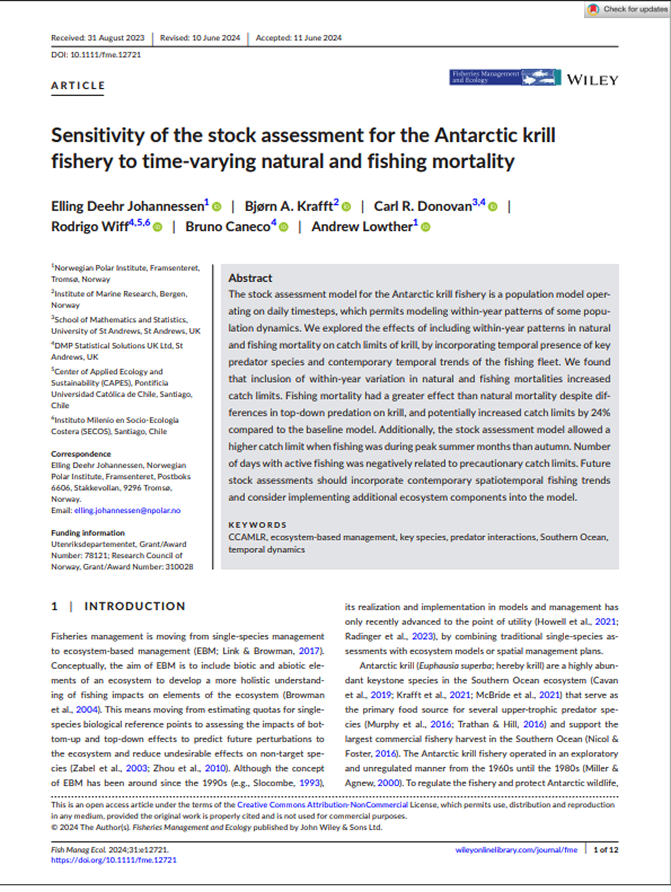Antarctic ecosystem
Fisheries management
Biomass
Climate
Krill (Euphausia superba)
The Rapid Population Collapse of a Key Marine Predator in the Northern Antarctic Peninsula Endangers Genetic Diversity and Resilience to Climate Change
Summary
Antarctic fur seal populations at Cape Shirreff in the South Shetland Islands have collapsed by 86% since 2007, according to this study. The dramatic decline stems from two main causes: heavy predation by leopard seals, which kill an average of 69.3% of seal pups each year since 2010, and reduced food sources in the area.This population crash poses serious conservation concerns because the South Shetland Islands represent one of only four genetically distinct breeding groups of Antarctic fur seals. The loss of this breeding stock would reduce the species' overall genetic diversity. Interestingly, adult seals show good body condition during winter months, suggesting they can find adequate food in other locations. This indicates that local environmental changes around the Antarctic Peninsula, rather than ocean-wide food shortages, are driving the population decline.

1
This graph shows Antarctic fur seal pup counts (living and dead) from 1959 to 2020 across South Shetland Islands breeding sites. Gold triangles represent the entire archipelago, blue circles show Cape Shirreff data, and green squares indicate San Telmo Islets counts. This six-decade dataset reveals dramatic population changes and highlights the South Shetland Islands' role as critical breeding habitat. The comprehensive survey data provides essential baseline information for understanding population dynamics and the current conservation crisis facing this genetically distinct breeding stock.Key Findings
1
Antarctic fur seal numbers at Cape Shirreff have plummeted by 86% since 2007, representing a severe local population crash.2
Leopard seals kill an average of 69.3% of fur seal pups each year since 2010, with rates ranging from 50.3% to 80.9% annually.3
Antarctic fur seals are not one uniform global population but rather four genetically distinct breeding stocks, making each group's survival crucial.4
Female seals are spending longer periods away from their pups during foraging trips, indicating that prey has become scarcer in nearby waters.5
Adult seals maintain good body condition through winter, suggesting the decline results from regional issues around the Antarctic Peninsula rather than ocean-wide food shortages.6
The South Shetland Islands population represents a genetically distinct group that cannot be replaced by other fur seal populations, making its preservation essential for the species' long-term resilience.

